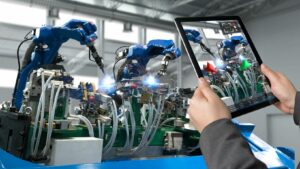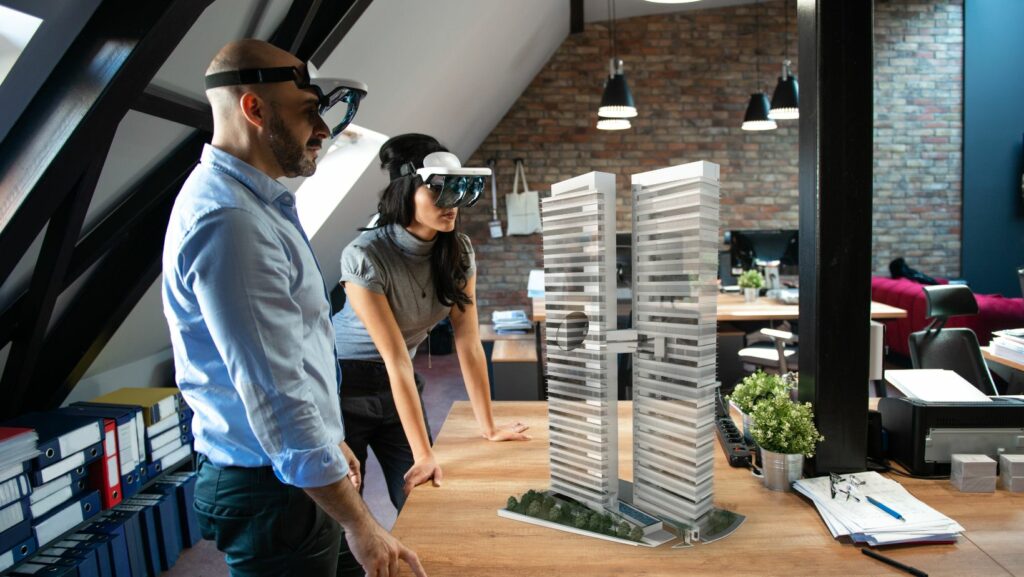Augmented reality development has revolutionized the way we interact with technology, blending the virtual world with our physical surroundings. It’s transforming industries, from gaming and entertainment to healthcare and education. Companies are harnessing the power of AR to create immersive experiences that engage users in unprecedented ways. With the rise of smartphones and wearable devices, AR development is becoming more accessible and widespread.
Augmented Reality Development
Early Innovations and Key Milestones
 Augmented reality (AR) development has a rich history that dates back to the early 1990s. The term “augmented reality” was first coined by Tom Caudell, a researcher at Boeing, in 1990. This marked the beginning of a new era where digital information started blending seamlessly with the physical world.
Augmented reality (AR) development has a rich history that dates back to the early 1990s. The term “augmented reality” was first coined by Tom Caudell, a researcher at Boeing, in 1990. This marked the beginning of a new era where digital information started blending seamlessly with the physical world.
Key milestones in AR development include the creation of the first AR system by Louis Rosenberg in 1992, known as the Virtual Fixtures system. This system laid the groundwork for future advancements in AR technology by enabling users to interact with virtual objects in a real-world environment.
Impact of Mobile Technology on AR Development
The advent of mobile technology has revolutionized the landscape of AR development. With the proliferation of smartphones and tablets, AR applications have become more accessible to the general public. Companies like Niantic, the creators of Pokémon GO, have demonstrated the immense potential of AR in creating engaging and immersive experiences for users on mobile devices.
Mobile devices equipped with cameras, sensors, and powerful processors have become the primary platform for AR applications.
Tools and Technologies in Augmented Reality Development
Popular AR Development Platforms
 One of the widely used AR development platforms is Unity. It’s a versatile tool that offers a robust environment for developing AR applications across various platforms like iOS, Android, and Windows. Unity provides a user-friendly interface along with a wide range of libraries and plugins, making it a top choice for developers aiming to create immersive AR experiences.
One of the widely used AR development platforms is Unity. It’s a versatile tool that offers a robust environment for developing AR applications across various platforms like iOS, Android, and Windows. Unity provides a user-friendly interface along with a wide range of libraries and plugins, making it a top choice for developers aiming to create immersive AR experiences.
Another prominent platform in AR development is Vuforia. Known for its advanced computer vision technology, Vuforia enables developers to easily create marker-based and markerless AR applications. With support for smart glasses, Vuforia caters to a diverse range of AR projects, from educational apps to industrial solutions, enhancing the overall AR development landscape.
Emerging Technologies Shaping AR’s Future
The future of AR development is heavily influenced by emerging technologies like machine learning and spatial computing. Machine learning algorithms play a significant role in enhancing AR experiences by enabling real-time object recognition, scene understanding, and interaction customization. This technology advancement paves the way for more sophisticated AR applications capable of delivering personalized and adaptive user experiences.
Spatial computing is another crucial technology shaping the future of AR. By integrating virtual objects into the physical world with precise spatial mapping, spatial computing enhances the immersion and realism of AR environments.
Applications of Augmented Reality Across Industries
AR in Gaming and Entertainment
 Augmented reality (AR) has transformed the gaming and entertainment industries by offering unparalleled immersive experiences to users. Companies like Niantic have revolutionized mobile gaming with AR applications like Pokémon GO, where players can interact with virtual elements overlaid on the real world. AR technology enhances storytelling in entertainment, creating interactive experiences in theme parks and museums. The utilization of AR in gaming and entertainment continues to push boundaries, offering users unique and engaging experiences.
Augmented reality (AR) has transformed the gaming and entertainment industries by offering unparalleled immersive experiences to users. Companies like Niantic have revolutionized mobile gaming with AR applications like Pokémon GO, where players can interact with virtual elements overlaid on the real world. AR technology enhances storytelling in entertainment, creating interactive experiences in theme parks and museums. The utilization of AR in gaming and entertainment continues to push boundaries, offering users unique and engaging experiences.
AR in Education and Training
In the field of education and training, augmented reality has become a valuable tool for enhancing learning experiences. AR applications allow students to visualize complex concepts in 3D, making subjects like biology or geometry more engaging and understandable. Training programs in various industries use AR to simulate real-world scenarios, providing hands-on experience in a safe environment.
AR in Healthcare
Augmented reality is making significant advancements in the healthcare sector, transforming patient care, medical training, and surgery procedures. Surgeons can use AR to overlay patient data during operations, enhancing precision and reducing risks. Medical students benefit from AR simulations for practicing surgeries and understanding anatomy. AR technology is used for patient education, showing visualizations of medical conditions and treatment plans.

